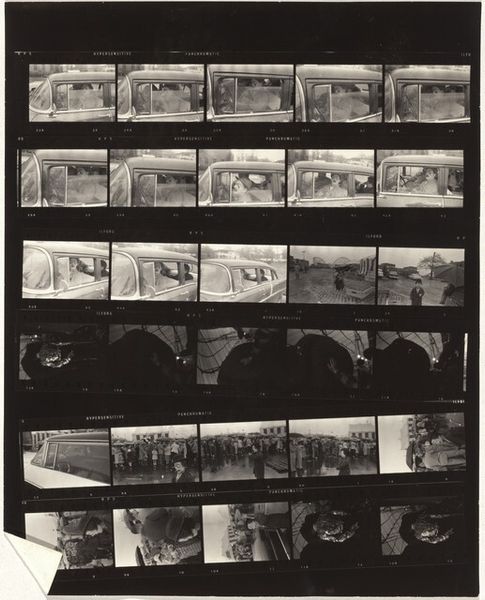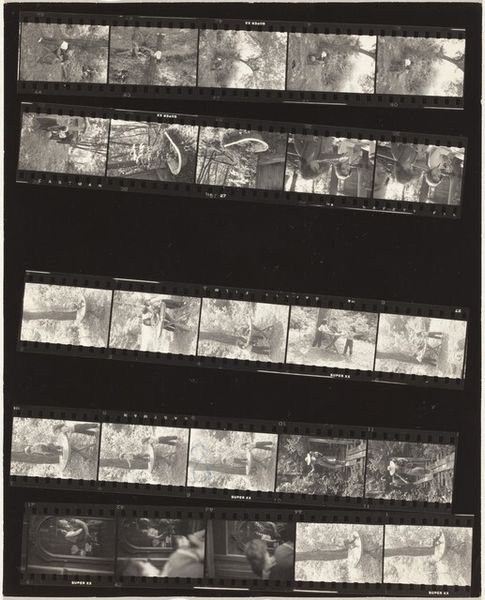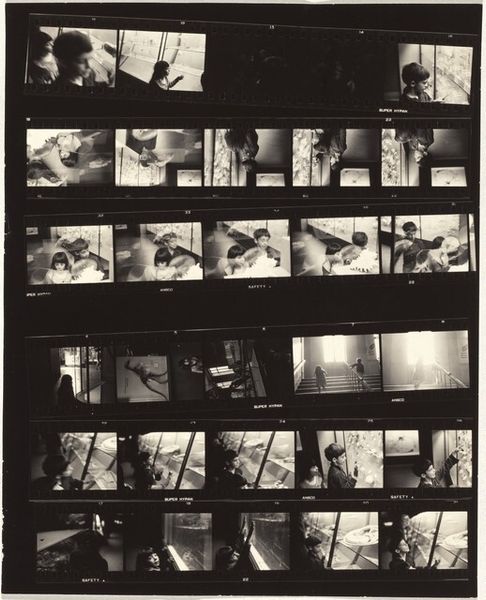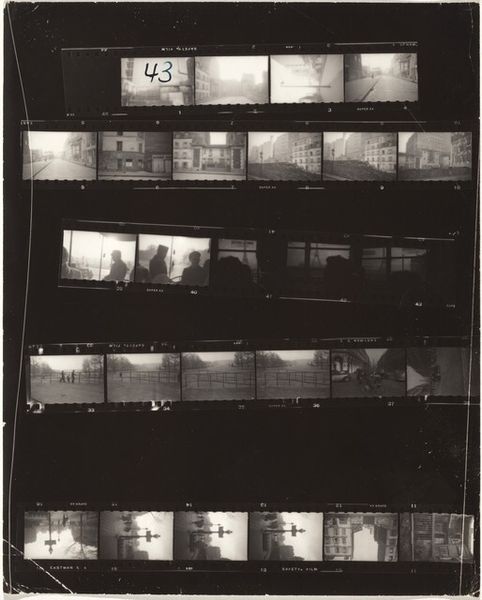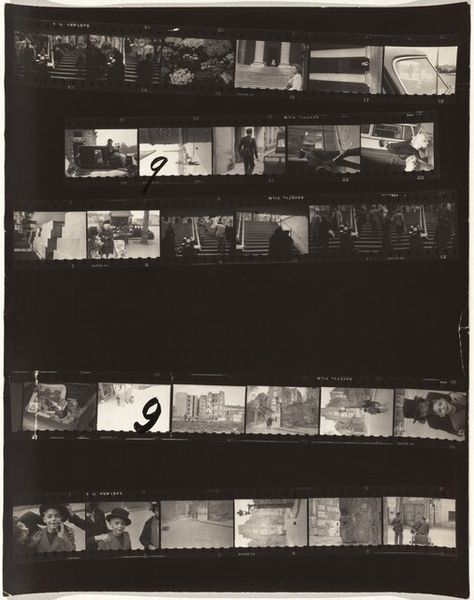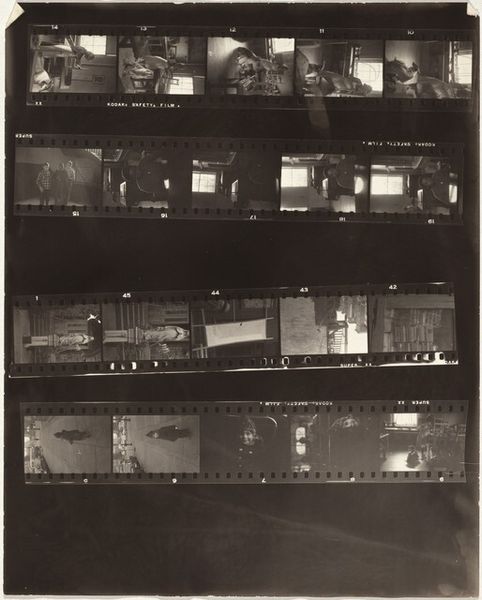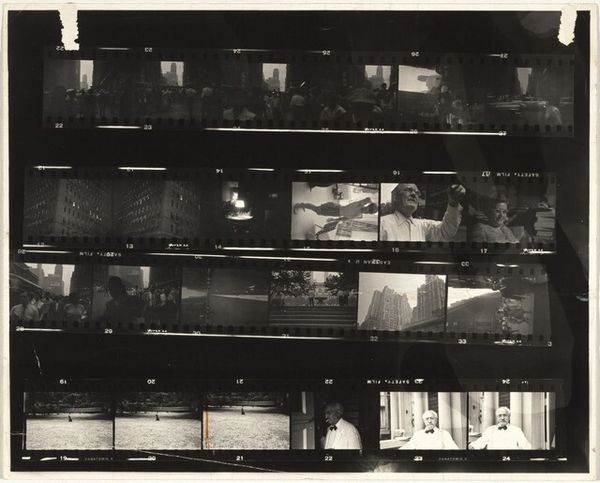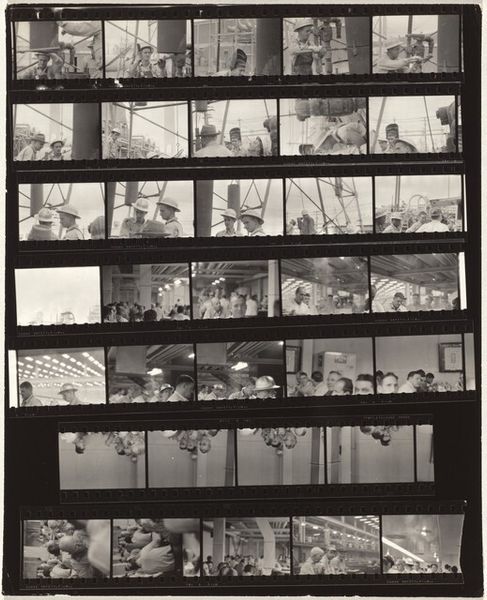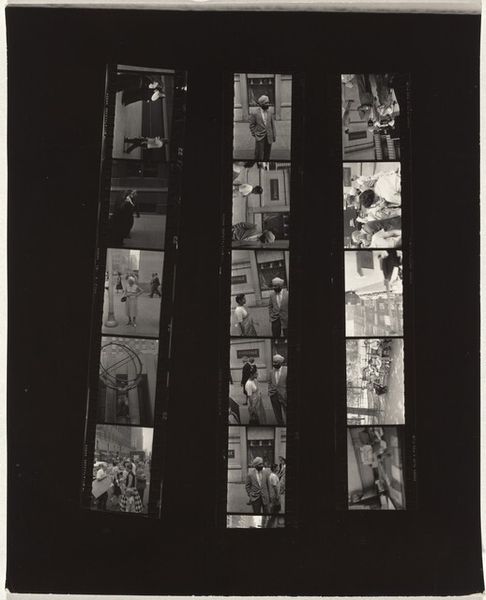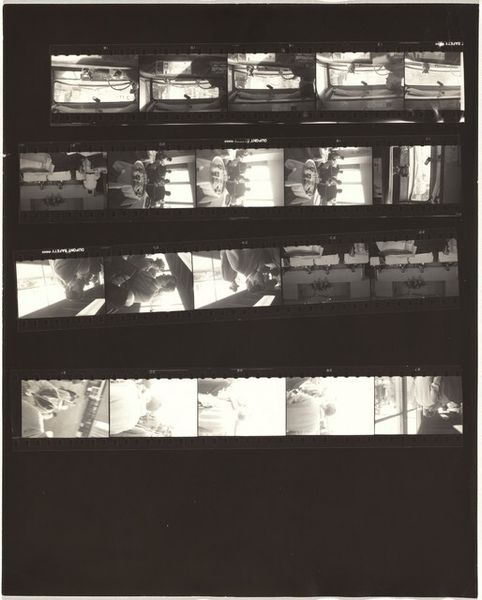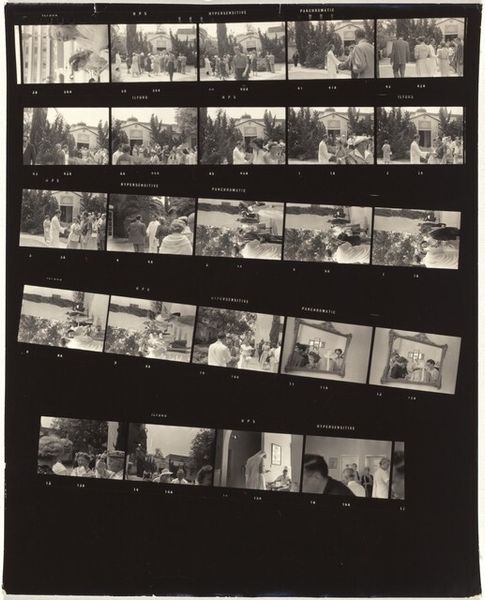
photography, gelatin-silver-print
#
portrait
#
film photography
#
landscape
#
street-photography
#
photography
#
gelatin-silver-print
#
monochrome photography
#
ashcan-school
#
cityscape
#
modernism
#
monochrome
Dimensions: sheet: 25.2 x 20.1 cm (9 15/16 x 7 15/16 in.)
Copyright: National Gallery of Art: CC0 1.0
Editor: So, this is Robert Frank's "Family--New York City no number" from 1953, a gelatin-silver print. It's quite raw, like a contact sheet. The arrangement of images… almost gives a cinematic feel, though each frame is a different angle, subject, or view of the city. How do you interpret this kind of sequencing, especially in the context of post-war America? Curator: The sequence speaks volumes, doesn't it? Frank presents us not with a singular, heroic narrative, but fragments. Consider the repetition of the church façade, a constant backdrop almost, against the changing vignettes of everyday life – children at windows, bustling street scenes, snippets of urban architecture. The church, then, might represent a kind of foundational stability, a cultural memory, while the fleeting moments capture the evolving identity of the city and its people. Editor: I see what you mean. The church *is* grounding it all. Is it a critique, maybe? Curator: Perhaps a gentle one. What cultural expectations were being projected onto the "American family" at the time? Note the isolation of the children in some frames versus the almost chaotic energy of the traffic. Frank subtly plays with the contrast between idealized domesticity and the lived reality of the city. The 'no number' in the title itself signifies the interchangeable experience, that is not *a* family but *any* family, inviting our interpretation, no? Editor: That makes the piece even more evocative, thinking about the pressure families felt. The "no number" almost suggests anonymity. Curator: Precisely. He asks us to consider how individuals and institutions – symbolized by the church – negotiate the increasingly complex and impersonal landscape of modern urban life. The photograph captures the tension, that interplay. Editor: Wow, seeing the symbols really adds layers to my understanding. I’ll definitely look at Frank's work differently now! Curator: As will I, now that we have explored this interplay together! Thank you for your insights.
Comments
No comments
Be the first to comment and join the conversation on the ultimate creative platform.
